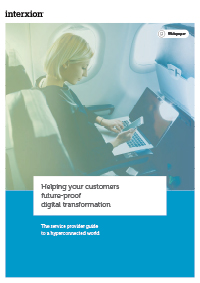By: Jelle Frank van der Zwet
Infrastructure certainties
What we can be confident about is that we are in a period of rapid change. Today's service providers and system integrators will need to adapt to new demands on their customers' IT environments, including the growing communication between different systems, platforms and users. And with data regulation becoming ever more stringent, everything needs to be fast and safe: you will need to have full control of where data is housed to meet the high expectations of security and performance that your customers, and the regulators, set.
Local handling and storage
More companies are now using cloud services and hybrid infrastructure to take advantage of more flexible and scalable solutions, but with these advantages new connectivity and security aspects arise. This is particularly relevant for government agencies and other public entities handling sensitive data. For these types of customer, data storage is often a crucial factor in choosing their IT infrastructure: they will demand a comprehensive security strategy and the use of qualified partners at all stages of cloud migration – for systems, applications and data.
Colocation and cloud
Cloud providers like Microsoft, AWS, Oracle, as well as Google and IBM offer good security with firewalls and real-time monitoring against intrusion and threats in the public cloud. But for those entities with strict legal requirements for local data storing and processing, this is not enough.
Providers have responded to this with locally housed private cloud-based services, where applications are run and stored locally, in-country, alongside any data produced. Microsoft’s Azure Stack for example, is a private Azure cloud release for IaaS or SaaS, where all data processed is stored and checked locally. This means that organisations can benefit from modern cloud services, while still being able to guarantee the handling of all their data in-country.
In response to this demand, colocating in neutral data centres has emerged as the alternative for the enterprise data center. These neutral and local data centres provide private direct connections to all major cloud providers, built to ensure a fast and secure connection. This stops data transfer taking place, in contrast to standard Internet lines which cannot guarantee the same performance or security.







